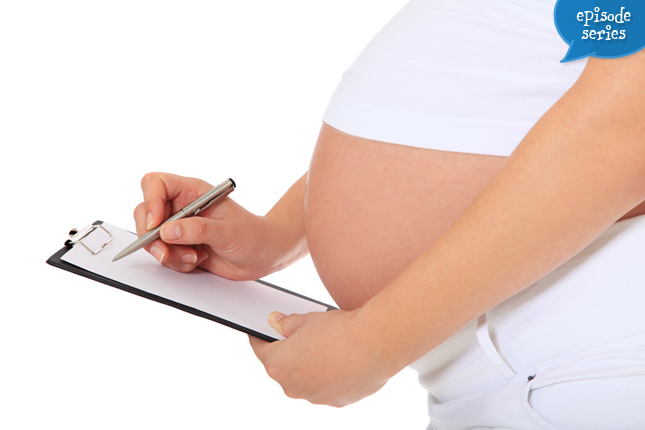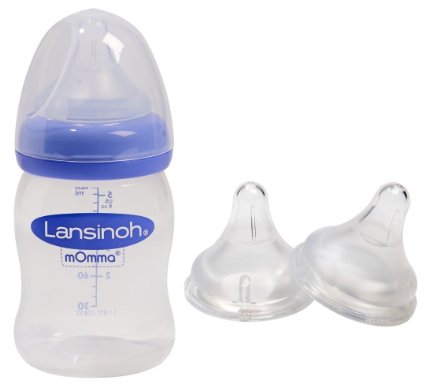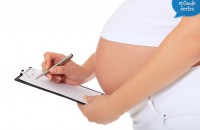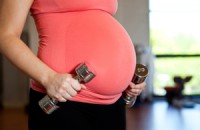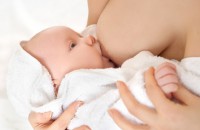Preggie Pals
Your Baby Registry: Bottles or Breastfed Babies
[00:00:00]
Please be advised, this transcription was performed from a company independent of New Mommy Media, LLC. As such, translation was required which may alter the accuracy of the transcription.
SUNNY GAULT: Hey Preggie Pals, have you listened to ‘Newbies’ yet? It’s our new podcast for postpartum moms, through the baby's first year. Each week you’ll hear great episodes featuring experts and real moms as they explore the challenges of caring for themselves and their new babies. Subscribe on iTunes and listen on the go through our free apps. Babies don’t come with instruction manuals. That’s why there’s Newbies, for new moms and new babies.
[Theme Music]
STEPHANIE GLOVER: Creating a baby registry can be overwhelming. Though you may be planning to breastfeed, you might want to add baby bottles to your list. But you’ve no idea where to start and an endless sea of baby items. How do you even choose what’s right for your baby. Today we’re learning all about the different features available when buying baby bottles for breastfed babies. This is Preggie Pals.
[Intro/Theme Music]
STEPHANIE GLOVER: Welcome to Preggie Pals broadcasting from the Birth Education Center of San Diego. Preggie Pals is your online, on-the-go support group for expecting parents and those hoping to become pregnant. I’m your host Stephanie Glover. Preggie Pals is several series, just like this one to provide parents-to-be with helpful information. Visit the episode guide on the website to scroll through the previous topics. Listen directly on your computer through iTunes or download our free app available on android, iTunes and windows marketplace and be sure to check out our new network app where you can listen to all of your favorite New Mommy Media shows on the go. Here’s Sunny with more information on how you can get more involved with Preggie Pals.
SUNNY GAULT: Alright, everybody, so we’d love to hear from our listeners, we love you guys to be part of our show. We’ve some segments on our website that you guys can check out and submit to. We’d love to get mail from you guys and just, you know, get some feedback on what you think about the show. We’d love to have you guys suggest story ideas, episode ideas for us. So we have, what is it now, a hundred, over a hundred and thirty episodes for Preggie Pals and it, it’s helpful to get some ideas.
STEPHANIE GLOVER: After a hundred and thirty episodes.
SUNNY GAULT: Yeah, so, if you guys are listening and you want us to do a specific episode just email it to me and I’ll totally check it out and lot of our really good episode ideas have come from that. So, appreciate you guys sending stuff in.
STEPHANIE GLOVER: Thank you, Sunny.
SUNNY GAULT: Yup
STEPHANIE GLOVER: So, let’s cover some panelist introductions. I’ll go first. I’m Stephanie Glover, host of Preggie Pals. I am also a trained Child Birth Educator. I’m 33 and I have two daughters ages four and two. Gretchen my four-year-old is my ‘C’ section baby and Lydia my two-year-old is my VBAC. Shannon?
SHANNON BULZONE: Hi, I am Shannon. I am 31 and a stay-at-home mother and my daughter is two. Her name is Gabriella and my son is four months and Gabriella was a ‘C’ section and so was Emerson.
STEPHANIE GLOVER: Thank you for being here, and Sunny.
SUNNY GAULT: Yeah, I’ve for kiddos too. I have, let me see, my oldest is five, a boy, I have a three-year-old boy and then I have twin girls who are just turning two now and my first baby was a vaginal birth and with an epidural, which I highly recommend for those of you who are on the fence and if you are not a big fan of pain.
I like epidurals and then my other two, so my second baby and my twins were both cesarean. I did have to do bottles, actually with all of my babies. I breastfed all of my babies, but then there are times where you know, when you are away.
STEPHANIE GLOVER: You are in the studio
SUNNY GAULT: You are in the studio, but sometimes my babies just came with me to the studio.
STEPHANIE GLOVER: Oh, yeah.
SUNNY GAULT: We’ve got so funny pictures of that. Me holding two babies, and like handling all the editing required and stuff. But anyway, yeah but, there, then there’s sometimes, sometimes you just need a break, right? And you know you can pump before and feed your babies breast milk later on, so, yeah. But the babies have to take the bottles, which is what we’re going to talk about today, right?
STEPHANIE GLOVER: Right. Thank you.
SUNNY GAULT: Yes.
[Theme Music]
SUNNY GAULT: Before we kick off today we are going to talk about a news headline here. And this is coming out of the Cleveland clinic which, those of you, that listen to Preggie Pals know that I’m an Ohio native, don’t live there anymore, but it’s from my hometown, kind of thing.
STEPHANIE GLOVER: Represent
SUNNY GAULT: Represent. Okay, so, Cleveland clinic is doing something really great with ten women, that suffer from Uterus Factor Infertility, they call that UFI and anyways they are going to have a chance to become pregnant by doing this uterus transplant surgery and it’s the first that this is being done in the United States.
Apparently, there are 50000 women in the United States that can’t get pregnant due to UFI. So this could actually, potentially help a lot of women out there. The difference with this, I don’t know if you guys remember, but on Preggie Pals, we talked about a similar case of a womb transplant in Sweden. So, apparently, that was using a living donor organ. In this one with the Cleveland Clinic, it’s going to use deceased donor organs and then, they say that is going to mineralizes injuries and time in the operating room.
They keep saying, “hey, this is still experimental”. They don’t want to get people hopes up too much, but, man, I mean, I know, I went through a little bit of infertility in the beginning with my first child and you know they did a bunch of test on us and kind of figure out what was wrong. I think overall just happened to be a timing thing. But I remember thinking, “Oh, my Gosh, what if we can’t have children?” you know, and if I was one of these 50000 women, I’d be pretty excited to hear about something that could
STEPHANIE GLOVER: The hope of it, yeah.
SUNNY GAULT: Totally change you know, your whole life, right. So, I don’t know, Stephanie what do you think?
STEPHANIE GLOVER: Oh, I think it’s incredible. I think this is an example of, when science is on our side, particularly, well I think either way, if it’s living or deceased, I, yeah, because I remember the article about the woman in Sweden and I want to say, the donor was maybe in her 60’s.
SUNNY GAULT: Oh, really.
STEPHANIE GLOVER: I think, she was one of the
SHANNON BULZONE: I should remember that.
STEPHANIE GLOVER: Which was actually, pretty neat, because if you are not using it then why not let some else use it.
SUNNY GAULT: It’s true.
STEPHANIE GLOVER: It’s really, it’s pretty, and it’s really cool.
SHANNON BULZONE: Yeah.
STEPHANIE GLOVER: So, I would be curious to know how they would decide on which deceased women are eligible to donate and none of it touches on that.
SHANNON BULZONE: True.
STEPHANIE GLOVER: Only because I have a scar on my uterus and from my first ‘C’ section, but it would be something that I would be totally willing to check on that you know donor card.
SUNNY GAULT: Am I, I am going to check, oh.
STEPHANIE GLOVER: Because, I just think about it, an awesome, what an awesome opportunity I got, so.
SUNNY GAULT: Yeah.
SHANNON BULZONE: I think it is interesting, part of, a little bit selfish part of me is like, if I have, if this, you know, goes through, and it’s athing, could they use this for moms that have had ‘C’ sections that and if you want to have
SUNNY GAULT: Oh yes a VBAC
SHANNON BULZONE: Yeah, exactly. Because, my midwife was like you had two ‘C’ sections and you might have more ‘C’ sections now, depending on what the Dr. Cap wrote in your medical record, your uterus might be too thin to through the trail of labor. You might hemorrhage, that, you know,
SUNNY GAULT: Oh, Yeah
SHANNON BULZONE: That’s a real, real possibility, so, I am sitting here selfishly thinking
SUNNY GAULT: No
STEPHANIE GLOVER: Right
SHANNON BULZONE: “Oh, I can get a new uterus, that does, doesn’t have any scars and then I can try my vaginal delivery”. With my luck I’d probably have another ‘C’ section. But, it’s an interesting thought.
STEPHANIE GLOVER: It would be lower risk ‘C’ section.
SHANNON BULZONE: Exactly, exactly.
SUNNY GAULT: That sound’s really interesting
STEPHANIE GLOVER: Awesome thought.
SUNNY GAULT: Yeah, totally. I think it can help so many moms out there that really want to have babies. Anyways kudos to Cleveland Clinic for giving this a go, and, yeah, we’ll be tracking it, so hopefully, you know, more information I’m sure if it’s successful, we’re going to hear a lot more about this, so.
STEPHANIE GLOVER: And we should have them on our show.
SUNNY GAULT: Heck, yeah. I don’t think if we just call Cleavland clinic, I think, they’ll be like “Oh, yeah let me release the name of our patients too.” Something like HIPPA or something like that, they think it protect them, I know, right?
STEPHANIE GLOVER: But, you’ll be internet famous.
SUNNY GAULT: I know, right. Anyway, so, we’ll be tracking this for you guys.
[Theme Music]
STEPHANIE GLOVER: Today we’re discussing baby registries, specifically bottles, joining us on the phone us is Gina Ciagne, Certified Lactation Counselor, mom of two breastfed kids and Global Vice President of health care relations at Lansinoh, a breastfeeding and pumping accessories company. Welcome to Preggie Pals, Gina.
GINA CIAGNE: Thank you.
STEPHANIE GLOVER: So, if you are intending to breastfeed, you may even wonder how bottles enter the situation and if you ever had children or breastfed a baby choosing bottles for your breastfed baby and putting them on the registry can feel really overwhelming. So, let’s kind of discuss how to even get started here. So, why is choosing a bottle for a breastfed baby so different than for a non-breastfed baby?
GINA CIAGNE: When a baby is breastfeeding, there are some really specific things that happen as far as how the baby latches or attaches onto the breast, how their tongue moves, how they, really an amazing natural process. Maybe, sort of invite the milk to come down to come out of the breast, and that’s called to let down. So, those are some of the really naturally triggered situations that are happening when a baby is breastfeeding and when a baby is, breastfed baby is using a bottle, one of the things has been, you know, able to happen is that, you know, sucking at the breast is different than sucking on a bottle.
Baby is using their tongue motion, called peristaltic motion, it’s just, you know, this up and down motion that the baby’s tongue does to get the milk to come down. And when a baby is using sort of a traditional bottle, the milk just pours out, it just, you tip it over and it just pours out, so baby doesn’t have to do the same thing that they’re doing when they’re breastfeeding, the milk is immediate. And when they are at the breast and the milk is not immediate, because babies suck, then the milk comes down and the baby is sucking and swallowing, so what can end up happening is that the breastfed baby sucks one way at the breast, doesn’t really need to suck the same way at a bottle and that compared it can get a little confusing for the baby or they start to develop a preference for the breast or the bottle.
Some babies have no problem, with this. Other babies think, “Wait, hold on a second. What am I doing, where am I and what am I supposed to do with my tongue?”, and it can just lead to frustration. So, there have been bottles and nipples specifically, really, that have been made to really take into account what baby does, when at the breast and you can’t ever replicate that, ever. But, you can throw some mimic to allow the baby to use the same action when using a bottle, but not all nipples are the same and it’s a little bit of a trial and error, just see which one baby kind of take to.
STEPHANIE GLOVER: Yeah, and I was just going to ask you, do they come in different shapes and sizes and then, you know is that something, you have to change as they get older.
GINA CIAGNE: Yeah, I mean, there are many shapes, many sizes and to be honest with you, many marketing claims that, some are valid, some are not valid. And so, it’s really, can be a little confusing for moms, to try to pick it out from the sea of products, what’s going to be right for her baby.
You know, there are nipples that are wide-based and then there are some that are smaller, there is some that stretch more than others and it really, this is the hard part, it really depends on how your baby sucks and how your baby breastfeeds.
My son was very efficient, got on, nursed, you know, under ten minutes, and he was done. So, the nipple that I need to use you for him maybe was a little bit of a faster flow, because he could handle that. With my daughter, she needs something a little bit slower and that’s really hard to know ahead of time. Because your baby also, in the beginning, could be you know little bit of slower at the sucker and then they start to wake up from being you know after their birth, which is you know, a long hard process for them and then they become a lot more efficient.
So, it really does, it is a watch and see type of thing which I know we’re, we really want sort of step by step instructions in these things but sometimes it’s a little bit hard, coz you don’t know your baby is going to be you, adjusting the milk, and quickly they are going to want their flow.
So, you know, what I recommend is watch your baby, how they would, you know, feed from a bottle and then if its taking a really long time you may need to move up. If it’s taking too short of a time, they are gulping and drinking too fast you may go down at [inaudible]
STEPHANIE GLOVER: Oh, and, so would you recommend that you just sort of wait it out and see how baby is doing or should moms register for a few different types, in advance to try them out?
GINA CIAGNE: Yeah, I mean, I do think, you know, best-laid plans go out the window, when you’ve got human’s involved, especially very small humans, who are just figuring out the whole, “I was just born, what am I supposed to be doing here” and you know it’s really important to be prepared for the thing. And you know sometimes milk doesn’t come in right away and you know the most important thing the baby needs is to get fed and so, you know, mom may have had a hard birth or whatever happens it’s good to have something in the house so that if somebody needs to feed the baby and the mom can pump, it can feed the baby, you know it’s important to have those, sort of tools with you. So what I recommend is researching, you know, reading reviews of other moms, who have used products, having at least a few different options, slow flow, medium flow because, again when you are in that situation you want to be able to grab a tool and have something for you to be able to feed the baby.
STEPHANIE GLOVER: Right, if it’s 3am, you don’t want to be running to the store trying to figure out.
GINA CIAGNE: No, not so much.
STEPHANIE GLOVER: And, how many models should you register for, if you plan to give your baby that, that breast milk in a bottle?
GINA CIAGNE: What I recommend is when you’re registering, it, it’s, you know, people do like to give presents, and people like, for you to be picking things out, but I wouldn’t go and get a twenty-four pack of a certain type, because, really, a nipple that might work for one baby might not work for your baby. And so I would recommend getting like some kind of starter set or some kind of, [inaudible] bottles or so, you know, it really is up to you, your storage capacity.
STEPHANIE GLOVER: Right.
GINA CIAGNE: Your option. I just wouldn’t go out and get like a mass amount of one certain type, just because, you don’t know if it’s going to work for you. I mean I do think that there are companies like Lansinoh, you know, I worked for Lansinoh, but, before I worked for Lansinoh, I also did a lot of trial and error and what, you know the nipples that my daughter were the one, you know, different than the one that my son took and what I liked about, when I started working at Lansinoh, my son was having a little bit of a hard time taking a nipple.
I tried the nipple that Lansinoh had, naturally nipples. I didn’t just take their word for it, because I’m a mom and I really, I just don’t want to take anybody’s word for anything when it comes to my baby. But I tried, enabling the baby to use the same wave of notion. The difference is that it enables the baby to use the action instead of the nipple which is in an inanimate object doing pumping. The nipple can’t do anything, it needs to- the baby needs to stretch it out, the baby needs to use the same action. So, you know, you want to try those; avoid any pitfalls like nipple confusion or things like that. So looking for a nipple that has been tested with a breastfed baby is really important.
SUNNY GAULT: Gina, I don’t know if you remember this, but, it had have been over a year ago, now, I saw you, and when we were chatting at the ABC Kids Expo, and I was telling you that my twins were not- they were refusing to take a bottle and up to that point I pretty much just breastfed on demand and I had a flexible enough schedule to do that. And I remember, you gave me, no joke, I am not lying and she is not paying me to say that, but she gave me these bottles.
GINA CIAGNE: No, that’s totally true, I remember it.
SUNNY GAULT: Yeah.
GINA CIAGNE: I specifically remember the conversation
SUNNY GAULT: Yes, and you gave me some to test and that was I only bottle that my girls would
STEPHANIE GLOVER: Changed it forever.
SUNNY GAULT: It did, no, it does.
STEPHANIE GLOVER: Yeah
SUNNY GAULT: When your baby will finally take a bottle and in my case babies.
STEPHANIE GLOVER: Right
SUNNY GAULT: They were so demanding. It was the only thing that they would use.
STEPHANIE GLOVER: Did you ever bottle feed using breast milk with your kiddos.
SHANNON BULZONE: I did, so I found the system that would allow me to pump directly into a bag that goes into the freezer.
SHANNON BULZONE: Okay, and then you thaw that bag out and you pop it into this little thing and pop a nipple onto it
STEPHANIE GLOVER: Oh, yeah
SHANNON BULZONE: You know what I am talking about?
STEPHANIE GLOVER: I do
SHANNON BULZONE: Oh, my God, I love this system. Gabriella hated the nipple that came with the system. So, I was like, “Oh my goodness I can’t use the gadget.
STEPHANIE GLOVER: Right!
SHANNON BULZONE: I got to have this, you know. So, they end up with these bottles that, they are glass,I love glass and they have this like blue thing inside that was supposed to help reduce gas and you know the nipple was really slow for her. I, you know, I was lucky that neither of my kids had nipple confusion. Wherever the food was coming from is where they would take it. The only thing was Gabriela, she would not take a bottle from me, so I would.
SUNNY GAULT: She wanted it straight from the [inaudible]yeah?
SHANNON BULZONE: Yeah, exactly. She would not take a bottle from me. I really loved the idea of being able to pump into a bottle and take a shower and then power my husband to be like, “hey you are in charge, feed the baby.”
STEPHANIE GLOVER: Right
SUNNY GAULT: Right.
STEPHANIE GLOVER: Gina, I, I’ve seen, when sort of researching all the different bottle types, there’s plastic, there’s glass, are there pros and cons to this material?
GINA CIAGNE: You know, honestly with the type of technology that we have now-a-days with plastic, they are very sturdy, they are very light and it’s important now, you know we all know about BPA, and you know the plastic that was, you know the chemicals that were leaching into the food and we are a bit aware of BPA, which is hugely important. You know BPS, is now another thing that they are talking about in Europe, that would probably might have make its way over here, but BPS what they were using to BPA, and now people are saying, well okay, okay, so BPA is done how about BPS. So, you know looking for plastics that are staying on top of safety,making sure that there aren’t any chemicals that are being used in it that can leach into your breast milk, so, that’s all really important . Glass is really good, for, you know milk is fatty and the cream that happens, there is a separation that happens, you, sometimes the milk is more like skimmed milk, sometimes like it’s 2%, sometimes it’s like, whole really nice, creamy milk. That cream and that fat can stick to the sides of the bottles. It tends not to stick as much to glass, as it does the plastic, but, one of the things that you can do is, you put the cap on and you tip it over and then eventually all the droplets will, you know, fall through the sides. So, it really is the preference. A lot of the glass now are, it’s shatter proof that is a huge, huge benefit. I was really nervous about glass because when my kids were babies, there wasn’t, I couldn’t find a shatter proof glass that didn’t weigh like ten pounds. You know, it’s a matter of preference, but it is really nice offering out there, whether it’s plastic or with, with glass.
STEPHANIE GLOVER: Great, so, when we come back we’ll continue our discussion about bottles and the baby registry. We will be right back.
Did you know you can listen to episodes of Preggie Pals anytime, anywhere? Just download the apps available on iTunes and the Amazon App Store. My mommy loves to listen on her iPhone while she’s waiting for her doctor appointments. My mommy knows exactly what to expect. Thanks to Preggie Pals. She’s a member of their special club so she can listen to all the episodes; get extra bonus content, discounts and more.
Take my mommy’s advice and visit www.NewMommyMedia.com today.
[Theme Music]
STEPHANIE GLOVER: Welcome back. Today we’re discussing how to choose baby bottles and nipples for your breastfed baby. Certified Lactation Counselor Gina Ciagne from Lansinoh is our expert. Some bottles to claim gas and colic, I think Shannon mentioned that earlier, when she was trying out some bottles, so is that even possible or how would that work?
GINA CIAGNE: Yes, it’s absolutely possible and it’s something that is definitely an issue with babies and there’re, there’re several reason why they get gassy, they have burps, they have tummy distress, severely tummy and also colic which we don’t even know trying physically, what exactly the definition of colic is, but usually what it is, is cranky baby, crying lots, really uncomfortable, sad little babies who wants to be walked around like counseling.
So, it’s really important to know, you know, like positioning has to do a lot with, baby gulping in that’s really what’s ending up happening and baby is gulping in air unable to swallow it and that’s where the upset tends to happen. So, there’re a lot of different options, a lot of, I would say the majority of the bottles out there today, whether it’s for breastfed babies or non-breastfed babies, do have some type of air ventilation system. They have to anyway, because you can’t just have a completely sealed bottle, you need the airflow to be going in and going out as baby is sucking on the nipple. So, reviews on these types of things are really important from other moms and you know, really looking at the different options that you have available.
There are some bottles that you know do have very intricate system. An intricate system also translates into many different parts, many parts that need to be cleaned, so take all that into consideration. There are some nipples that actually have the ventilation system in the nipples, which really is a super-duper glorified hole. And it is just that the way to that hole is cut, you know, the natural way nipples for example, one of the examples of the nipples that has the hole in the nipple and was clinically proven and tested that it does reduce the amount of air intake which can reduce puffiness, burping, gassiness and tummy upset.
STEPHANIE GLOVER: I’ve seen too, like, there are so many different types of shaped bottles. I’ve seen kind of the long thin ones, and now they even have the round ones that sort of look like a breast. So can you talk us through maybe the different shapes and the differences of those?
GINA CIAGNE: Yeah, to be honest with you, I was talking about it a little while ago with you know, nipples and how they are shaped and it really is how the baby is going to react to that nipple. How the baby is going to be able to you know work with that nipple. The shapes of the bottles honestly have more to do with the parents than with the babies. You could have a situation where you know really early in the beginning of a mom, you know the babies in the NICU, for example, and mom is pumping and she need to get milk out for her baby.
She’s already stressed, she’s already probably really nervous, and if she’s pumping that early milk is really thick and dense, but it’s not going to be gushing, so having a really small, little container that the hospital would give to you can be really reassuring when you only have to fill two ounces out of a four once bottle as opposed to two ounces of an eight-ounce bottle, that can look like you are a total failure and of course you are not a failure. But it’s one of those things where, you know managing expectations is important, so in the beginning, what a lot of moms find helpful if their pumping in the first couple of weeks if they have to, you know, having a smaller ounce bottle like a four-ounce or you know five-ounce, it can be really helpful, because you know, she like“Oh, my Gosh, I got the bottle and I filled it and then when the baby gets older and they start changing where, ok, yeah, have a five-ounce to an eight-ounce bottle.
But, really the shape and the seal the ease of holding it really has more to do with the parents even as the baby gets older and wants to hold the bottles themselves a round bottle is not, going to make them thinks it’s the breast. It’s the hard plastic something, bingo, that it’s not the squishy breast, that are used to, you know, holding. So, you know there is a reason why there is design and color and all of those things because we like as consumers to have some cute things and that’s ok, just as long as the nipple on top is the one that actually works.
STEPHANIE GLOVER: Gotcha, I really actually like that tip about the mental shift when you see you fill a smaller bottle. Because I remember feeling discouraged.
GINA CIAGNE: Yeah
STEPHANIE GLOVER: When I had pumped, I knew when I would breastfeed, she always, my kids always feel full and satisfied, but pumping would always discourage me, except for like at last and it was like, just a tiny bit the bottom of the bottle, but if the bottle would have been smaller it would have
GINA CIAGNE: Yeah
STEPHANIE GLOVER: I’m like yes, and we need all the encouragement we get.
GINA CIAGNE: That’s a very good point you bring up because just like a baby getting milk, express breast milk in the bottle is never going to be the same as you know, baby to breast. The pump is tricking your body into thinking it’s a baby to let the milk out. That’s literally all that pump is and pumps are amazing and they are really good tools because they help, you know keep your milk supply going and if you have tried all those things. But a lot of times moms will say. I’m so worried that my baby is not getting enough of- my baby seems fine after feeding just like you just said. But then when I pump it, I only pump just two ounces out. Well, that’s just coz your body is super smart and knows that it’s not a baby.
SUNNY GAULT: You know, I, I remember after my twins were born, they were born at 35 weeks and they weren’t quite latching and we were doing a lot of skin to skin, but they weren’t really getting, you know, getting a lot of breast milk out. And so, I decided to do a lot of pumping for them and at least for the first two months, I think we were almost exclusively pumping. Like when I went to see my lactation consultant we would put them to breast and try to make it work but I was pretty much pumping in the very beginning and I had a hospital grade pump and you know, speaking of being able to like pump right into bottles, that’s kind of what it was, and it was a two-ounce bottle on either side, so it was the double pump, you know on either side and it went right into the bottle and Iremember just always feeling so good, that I could fill up pretty quickly and now, I was doing this every two hours.
STEPHANIE GLOVER: Right
SUNNY GAULT: Right, but I could fill up, like, you know, these two-ounce bottles, and I remember, you know, when I was pumping later, just feeling like “oh, good, I am just like five or six-ounce are going in”, you know not enough, in my mind, not enough was going in. It was just a mental feeling though.
SHANNON BULZONE: It’s amazing how your self-esteem is attached. I experienced that, I mean, with both my kids, because they are both ‘C’ sections, so I was like, I did not have, the vaginal birth that I planned on both times. I am going like, breastfeeding is going to be my thing that I do amazingly well. You know, so with Bre, she would nurse on one side I would pump the other side and I did not do that with Emerson, but he’s so big that, like I guess I have more milk because I can sit down at any point pump eight ounces and that was, he’s going to be four months this week, so now my supply started to like to level off a little bit more, I’ve backed off the pumping because, you know, busy. Now when I pump, I’ll get like four ounces and I’m like, “oh”.
SUNNY GAULT: It totally messes with
GINA CIAGNE: With my
SHANNON BULZONE: With my milk, right?
STEPHANIE GLOVER: And moms are so hard, we’re hard on ourselves, and it’s just one more thing, sometimes.
SHANNON BULZONE: So, I get it, I get it.
SUNNY GAULT: Yeah.
STEPHANIE GLOVER: Now, Gina are there accessories that are important to register for in conjunction with the bottle? I know there are sterilizers, warmers drying racks, I mean there is a slew of products, so are there anything that’s really recommended to go along with them?
GINA CIAGNE: As far as the accessories go, anything that you think will make you feel better about being efficient like if you just hate washing this, I hate washing dishes. And I, I hated washing the pump parts and the bottle when I would get back for work. If, I just got back from work then I have the baby and I want to nurse the baby and like I pretend to think about dinner and like. So, anything that you see, that you think is going to be like, “Yes, I think there’s a place for that.
My only recommendation is you’re going to have a lot of gear going on. People do like buying things, and that’s super fun. But you might get to a point and be like, okay. In theory that awesome, huge drying rack means great but I don’t have the space for it. So, the must-haves could turn into a really big pain if you’re just not sure. Still, what I recommend is get, put on your registry whatever you think going to be cool on that.
You think, “a drying rack”, but keep it in the box, see where you have sort of landed all the presents and anything and you know, you’re going to have family members recommending things and I think, it’s a little overwhelming sometimes when you got in with the zapper done and when you go to register and you’re like “I want this, I want that, I want that, but really don’t need a gadget for absolutely everything. And if it’s going to take more time to learn how you use it or like to clean something then you could just use your hands and soap and water. Those are things that you just are not going to have the luxury of you know those extra minutes sometimes.
STEPHANIE GLOVER: Right, if you are traveling or outside of home you might not even have those gadgets you are going to, chances are you’re going to have to learn how to do some things without them anyway.
GINA CIAGNE: Exactly.
SUNNY GAULT: Yeah.
STEPHANIE GLOVER: At some point, yeah.
SHANNON BULZONE: My mom laughed at me, she’s like you’ve got all this stuff, like what are you doing. And I’m like, “well, how do you stay sterilize this bottle?” She’s like “boil them”. You need, you need, water and a pot. Like, “what’re you doing on this counter”? I was like “That’s my drying rack, it looks like flowers doesn’t it? Cool.” And she’s like,“open the dishwasher and put the bottles in upside down. There you go.”
SUNNY GAULT: Yeah
STEPHANIE GLOVER: Thanks, Gina, for joining us today.For more information about Gina as well as information about any of our panelists, visit the episode page on our website. This conversation continues for the members of the ‘Preggie Pals’ club members. After the show, Gina is going to discuss tips for breast milk storage options.
[Theme Music]
LISA DRUXMAN: Hi, Preggie Pals, I’m Lisa Druxman, fitness expert and chief founding mom of Stroller Strides fitness programmers for moms and babies. Today I’m here to answer some of your most common questions, when it comes to exercise and pregnancy. Today I’m going to when it’s time to discontinue the exercise. When you’re getting warning signs that may be exercise isn’t right and that you should seek medical advice.
Overall, pregnancy is not a state of sickness and as long as you don’t have a functional indication; you should be able to exercise throughout your pregnancy. But it is very important to talk to your doctor with a good program and a well-designed program you should be able to exercise really all throughout each trimester. But, it is very important that you do know, some of the warning signs when you need to stop doing exercise during pregnancy. So, I’m going to list some of those. If you experience any of these at any stage of your pregnancy during exercise please do discontinue and check in with your doctor...
These signs include:-
° Bleeding
° Labored breathing which is prior to the exertion of the exercise
° Premature labor
° Dizziness
° Any severe abdominal pain
° Feeling unusually tired, I mean I know we’re all tired during our pregnancy, but if it seems like anything more extreme.
° Headache
° Chest pain
° Muscle weakness
° Gasping or swelling
° Decreased fetal movement
° Amniotic fluid leakage
Now, none of these things are things that you absolutely have to panic. Take it a step at a time, stop exercising, see how you’re feeling or just give a call to your doctor and decide if it’s something that you need to come in for.
Now there are certain absolute contraindications which say you absolutely should not be exercising during pregnancy. They include things like, heart disease and lung disease, some other things like placenta praevia.
Talk to your doctor, they will certainly let you know if you have any of these contraindications. .We want you to exercise safe, exercise smart and have a wonderful, wonderful pregnancy. I do hope you visit strollerstrides.com for more great information on how to stay fit throughout pregnancy and parenthood and be sure to listen to Preggie Pal for more great prenatal fitness tips.
[Theme Music]
STEPHANIE GLOVER: That wraps up the show for today. We appreciate you listening to Preggie Pals. Don’t forget to check out our sister shows
• Newbies for newly postpartum moms during baby’s first year
• Parent Savers for moms and dads with infants and toddlers
• Twin Talks, for parents of multiples.
• The Boob group for moms who breast feed
This is Preggie Pals, your pregnancy, your way
[Disclaimer]
This has been a New Mommy Media production. Information and material contained in this episode are presented for educational purposes only. Statements and opinions expressed in this episode are not necessarily those of New Mommy Media and should not be considered facts. Though such information in which areas are related to be accurate, it is not intended to replace or substitute for professional, medical or advisor care and should not be used for diagnosing or treating health care problem or disease or prescribing any medications. If you have questions or concerns regarding your physical or mental health or the health of your baby, please seek assistance from qualified health care.
SUNNY GAULT: New Mommy Media is expanding our lineup of shows for new and expecting parents. If you have an idea for a new series or if you’re a business or an organization interested in joining our network of shows through a co-branded podcast, visit www.NewMommyMedia.com.
[00:33:31]
[End of Audio]
